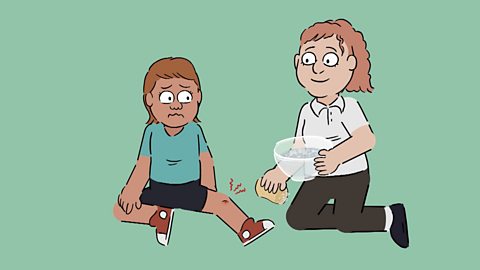Dr Emeka:
Hey, Iãm Dr Emeka and this is Dr Emekaãs Essential First Aid.
Resuscitation, or CPR, can save someoneãs life - so you need to learn how to do it.
If someone goes into cardiac arrest - that means their heart stops beating and oxygen isnãt moving around their body. Doing CPR and using an AED, or a defibrillator, could be a matter of life or death. But how do you do CPR?
CPR stands for cardiopulmonary resuscitation, but we could say it stands for:
CALL
PUSH
RESCUE
If you come across someone who has collapsed, the first thing to do is check for danger. If itãs safe to approach, check if they are breathing. Put one hand on their forehead, one hand under their chin and tip their head back to open their airway and check that it is clear. Check their breathing for ten seconds.
However, during Covid itãs best not to go near their mouth, so just keep an eye on whether their chest is moving up and down, and put a light covering over their mouth and nose.
If theyãre not breathing -
C - call for help. Shout to a friend to call 999 or 112 and get an AED - more about that later. If youãre alone, call on a speaker phone while you start compressions. Donãt leave the casualty!
P - push. Put one hand in the middle of their chest and place the other on top, linking your fingers. Lean over them, keep your arms straight and push in hard with the heel of your hand.
Thatãs this bit. You should push down about five centimetres. Thatãs about the size of a stick of gum.
Let the chest rise up and do it again. You should do about two compressions every second. Do this 30 times and thenãÎ
R - give them rescue breaths. Pinch their nose and breathe into their mouth, making a seal around it, for one second. Take your mouth away and let the lungs deflate before you do it again. Do two rescue breaths before you start your next 30 compressions. However, if youãre doing CPR during Covid, forget the rescue breaths, just keep doing chest compressions.
Keep going until help arrives, or they become responsive. If there is someone to help you, get them to bring you an AED while you continue compressions and if appropriate, rescue breaths.
This is an AED, which stands for automated external defibrillator, is a machine that can get the heart pumping again through a small electric shock.
They are found in lots of public places like supermarkets, schools or stations. Youãll see a white heart with a lightning bolt. Look out for them so you know where your nearest one is.
When you get an AED, get the person helping you to open it and turn it on while you continue your compressions. It will give you visual and audible instructions of what to do, make sure you follow these closely.
It will instruct you to place two pads on bare skin and stand back while it analyses the patientãs heart beat. [DEFIBRILLATOR: Analysing now. Stand clear.] You must then make sure no one is touching the casualty while you push the shock button. [DEFIBRILLATOR: Push to shock.] Leave the pads on, while you carry on compressions and if appropriate, rescue breaths - the AED will tell you if it is going to shock the casualty again, so listen out! It wonãt always give out a shock if itãs not the right thing to do. [DEFIBRILLATOR: No shock advised.]
REMEMBER!
Call 999 or 112, or call for help from others.
Push on their chest 30 times
Give them two Rescue breaths.
Keep going until help arrives!
If someone can get you an AED
Turn it on!
Follow the voice prompts
Make sure no one is touching the casualty while it analyses and shocks.
Then continue compressions and rescue breaths until help arrives!
You might just save a life!
Video summary
In this short film Dr Emeka introduces the process for administering CPR and how to use an AED (automated external defibrillator), with specific tips for staying safe during the Covid-19 pandemic.
With the help of animation, he explains what happens when someone goes into cardiac arrest and the steps that are needed to potentially save someone's life.
This short film is from the ǵüµÇ¨û§ Teach series 'Dr Emekaãs Essential First Aid'.
This film contains advice which was issued during the COVID-19 pandemic.
Teacher Notes
This short film is best used when students understand how to first carry out a primary survey on a casualty.
This is often summarised using the acronym DR ABC - Danger, Response, Airway, Breathing and Circulation.
- Danger - check it is safe to approach.
- Response - check if the casualty is responsive or unresponsive. (Unresponsive requires immediate CPR, responsive casualties should be put into the recovery position).
- Airway - check if their airway is clear.
- Breathing - check if they are breathing.
- Circulation - look for any signs of severe bleeding.
Students should be taught what to do if a casualty becomes responsive at any point (in which case they should be put into the recovery position) and if they are bleeding severely; if so the bleeding needs to be controlled by applying pressure to the wound.
Students could also be encouraged to discuss any fears they have involving the process of CPR and using an AED such as breaking ribs or shocking casualties that donãt require it.
They can be reassured that while breaking a rib is possible, it isnãt life threatening (whereas cardiac arrest is) and an AED will understand whether or not to shock a casualty once it has analysed them.
Pupils should also be made aware that some of the newer AEDs do not require chest compressions to stop while they analyse a casualties heart beat, but they most certainly need to be clear of the casualty if they are being shocked.
It should be made clear to students that an AED is the same as a defibrillator ã they are interchangeable terms, both referring to the same thing.
Pupils could discuss and show an understanding of the difference between a cardiac arrest and a heart attack.
80% of cardiac arrests happen at home, so it is likely that if a student comes across a cardiac arrest casualty, it will be someone that they know. However, if there was any reason why a student would not want to give rescue breaths to a casualty, it is important that they understand this is OK, and they should continue with chest compressions regardless.
Activities
Students could define ãresuscitationã and explain what it is for.
Students could discuss what a heart attack and a cardiac arrest may feel like and how they might recognise someone having one. They should be taught to recognise the difference between a heart attack and a cardiac arrest.
Students could draw a map of their local area and mark where AEDs can be found. They could also go through a list of the location of each AED in the school.
They could think of ways in which to fundraise in order to facilitate an AED being installed locally.
Students could practise CPR on a mannequin. (NB CPR should never be performed on someone who does not require it).
Other subject areas
- In science students could look at the function of the heart and what happens if it stops beating.
- In PE students could understand the muscles, strength and endurance that can be required when administering CPR.
Covid-19
In this animation we have suggested that mouth to mouth resuscitation is avoided. We have also suggested that a cloth cover the mouth and nose of the casualty for hygiene reasons to protect the first aider. This advice was current in December 2020.
However, for the latest guidelines on how to administer CPR during the Covid-19 pandemic please refer to the Resuscitation Council UK guidelines.
The main points to highlight are how to check for breathing safely without going close to the casualties mouth (check their chest movement for signs of breathing), what to do if you suspect the casualty has Covid-19 (place a covering over their nose and mouth) and refraining from giving rescue breaths.
This short film touches on elements of PSHE first aid as introduced to the curriculum in England from September 2020 for Key Stage 3.
While not on the curriculum specifically, it could also be used in Wales and Northern Ireland at Key Stage 3 and in Scotland at 3rd and 4th level.
How to make a call to emergency services. video
A short film teaching pupils how to recognise an emergency and how to make a call to emergency services.
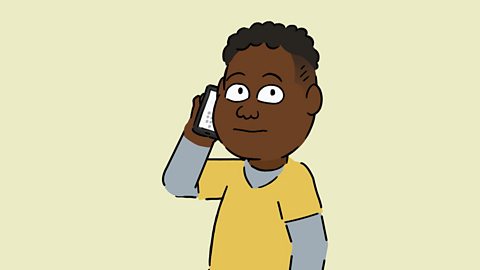
Burns and scalds. video
Dr Emeka gives an introduction to dealing with the types of burns and scalds that can occur in domestic settings.

Choking. video
In this short film Dr Emeka gives an introduction for pupils on how to help someone who is choking.
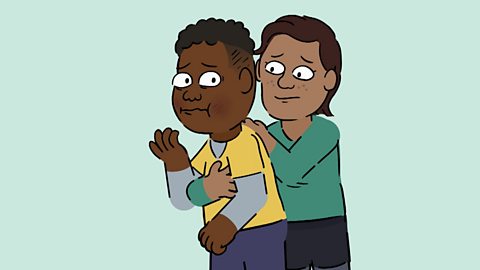
Bleeding and shock. video
Dr Emeka explains how to treat bleeding wounds, what shock is and what to do if someone goes into shock.
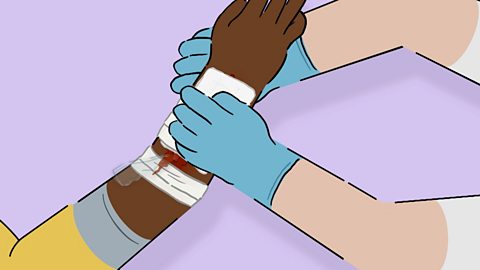
Head injuries. video
In this short film Dr Emeka explains how to tell if a head injury is minor or severe, and what to do in each situation.

Bone fractures. video
In this short film Dr Emeka explains to how to manage a broken or suspected broken bone.

How to administer CPR. video
In this short film, Dr Emeka introduces the process for administering CPR and how to use an AED (automated external defibrillator).
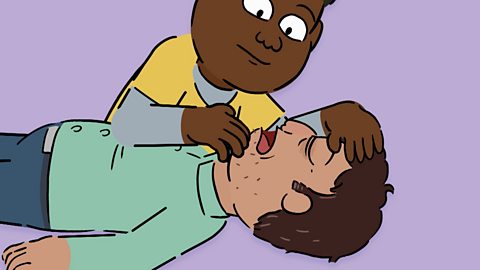
Bites and stings. video
In this short film Dr Emeka teaches pupils how to deal with bites and stings on themselves, or those around them.
